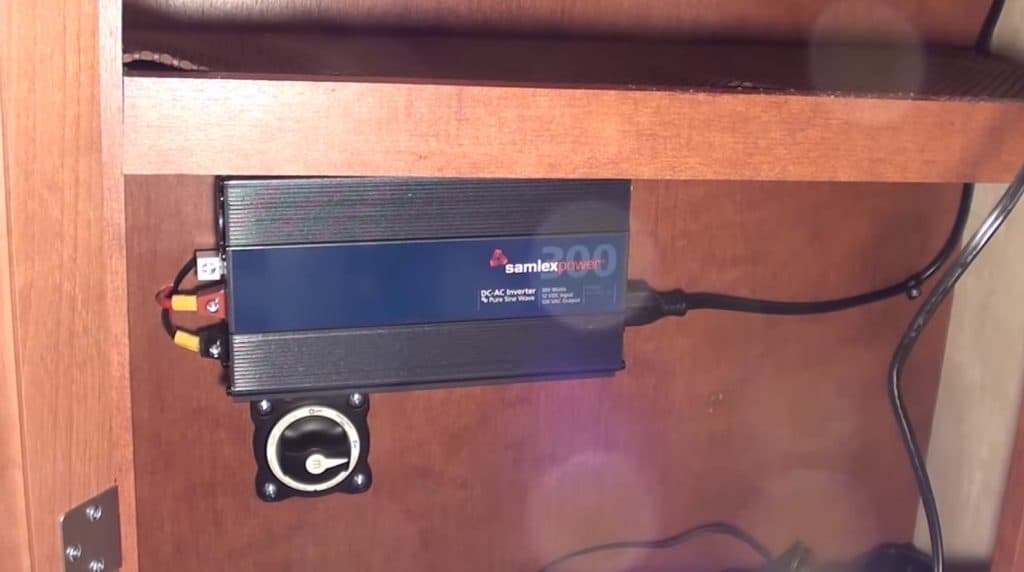How to Install a Power inverter in a Camper?
If you’re an outdoor enthusiast, having power in your camper van is a good way to make it feel more like “home”.
Rather oddly, few camper vans are self-reliant when it comes to power. In any case, generators have traditionally been used to generate power.
But the truth be told, you would not rather have a generator running for hours on end just to have your kids watching TV or charging your phone. Andnotwithstanding the “noiseless” operation of your generator, your campsite neighbors would prefer you not running the unit either.

And this is where an inverter comes into play; an essential electrical device, an inverter will convert the DC battery power of your camper to AC, allowing you to watch TV, brew coffee, and do a lot of tasks.
Installing a power inverter in your camper is a pretty straightforward process that you can do on your own.
In this article, we shall share with you the exact steps of installing a power inverter in your camper.
Table of Contents
Power Requirements

Before you even think of installing a power inverter, the first step is to determine your power requirements. After all, it would be a waste of time and resources to install an inverter that will not meet your power requirements.
Decide on the amount of power that you will need to run all your devices, and based on this figure, you’ll know what type of inverter to go for.
Installing the Inverter

Clearing the Space
When installing an inverter, you should first clear the space where you plan to fit the inverter.
Ideally, the location of the inverter should be where the potential for accidental damage is minimized. For instance, nothing flammable should be in the vicinity and there should be free circulation of air around the device.
For optimal performance, the inverter should be located close the battery of your camper. However, the two should not be located in the same compartment not unless you are using sealed AGM or Gel batteries.
The reason behind this is some battery types such as the flooded cell lead acid batteries generate flammable hydrogen gas when getting charged and by switching the inverter, it can cause a spark and subsequent explosion.Securing the Inverter
Once you have cleared a space for installation, fix the inverter to a secure spot. Ensure that all the electronic components in the inverter are protected against unnecessary concussion.
We recommend that you follow the manufacture’s manual with regards to the fastening points
Wiring
Installing an inverter is a pretty straightforward affair, and you don’t necessarily have to be a DIYer.
Basically, you’ll need to wire the inverter directly to your camper batteries with large battery cables.
The only major hindrance that you might face during the installation process is routing the inverters 120V output power to the applications where it is needed, either the new outlets or the existing outlets or to both.
For the existing outlets, you will need to disconnect the wires from the existing load center and connect them to the inverter.
However, since you still want these circuits to work on shore power, you’ll need something extra for switching them between the inverter and the external shore power.
Typically, you should wire your inverter to a separate power panel that will in turn feed the existing power outlets.
The power from the main breaker is also routed to the separate power panel and from here the auto transfer switch will control the distribution of power to the outlets from any one time.
On the other hand, wiring an inverter to a new outlet is the simplest task as the new outlets are seen as an extension from the inverter through a cord and plug.
Now, whatever you do during the installation, more particularly wiring, it’s crucial that you follow the instructions on the inverter manual concerning wire size and circuit protection.
Wiring Tips
There are a few tips or rather “musts” that you should be aware of before installing your inverter.
- 1When wiring, ensure that the connection system will not in any way make it possible for the shore power and the inverter to deliver power to the same outlet simultaneously. If this happens, it can result to the damage of your system, and this is why we always recommend that you use a transfer switch for controlling the power distribution
- 2If you are using a standalone inverter, it’s essential that you ensure the converter/charge never receives power from the inverter.
You now have a rudimentary understanding of how to install a power inverter to your camper, and depending on how adept you are with handling electrical equipment or wiring, you might want to hire a professional to do the installation.

